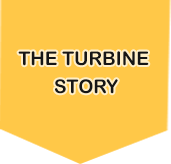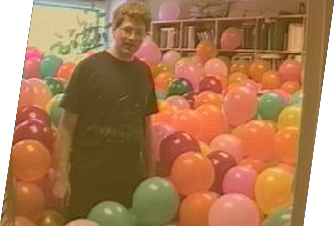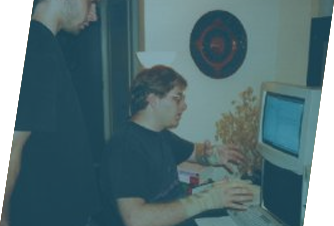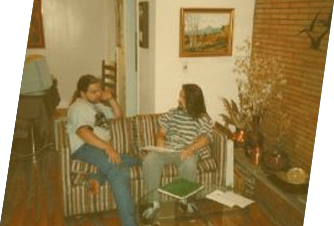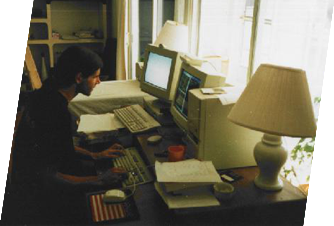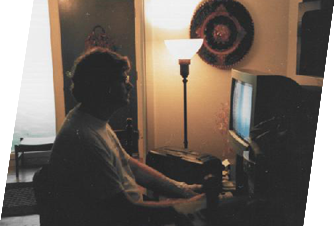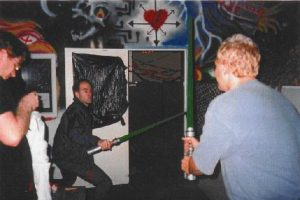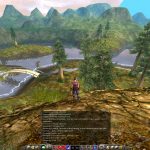Conferences
Hunting Publishers at Conferences
Finally, we moved into office space we could be proud of in Providence. It was difficult to hire people in Providence, so in 1996 we ended up moving to Westwood, Massachusetts, just south of Boston. I had too many business responsibilities, and hired longtime gaming friend Rickland Powell to help out, as executive vice-president.
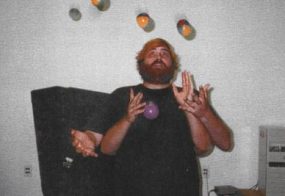
The first part of 1996 involved a ton of flying around the country, giving presentations to prospective publishers. I’d hired a businessman with a Harvard MBA to run the trip. Here’s how conventions work. You fly out to a computer games conference, along with your business reps, your technical reps, and your game designers and artists. Using your contacts and generally networking around, you drag people off to see your demo. This typically involves a lot of prowling around the conference show floor.If you’ve never been to a computer conference, I suggest going sometime just for the excitement. Computer game conferences are even wilder. Every company tries to impress you with glitz and glamour. They set up 20-foot stages with whirling lights, rock music, and projection TVs. Everywhere you see models, and free toys and t-shirts they’re giving away. Some of the companies have booths covering such large floor spaces that you can get lost in them! Of course, everywhere there are blazing computer screens with computer game demos. “We’re hot! Do a deal with us!” every banner seems to shout.
By mid-1996, Turbine was a company of 30 people: administrators, game testers, game designers, artists, and of course lots of programmers. Putting together an entire online world is similar to setting up an amusement park. It’s a huge undertaking, involving tons of artwork, music, gamewriting, and the entire programming infrastructure to make it work.
I’d had a great time meeting people, working like crazy, managing the projects and putting together presentations for outsiders. Together we’d attracted many publishers who were “checking us out”. But I wondered whether someone with a business background should be our CEO. In the end, I passed the position over to our sales consultant, remaining chairman of the board, and becoming the Chief Technology Officer (CTO), which gave me member-at-large responsibilities to foster cool technology. This included the artificial intelligence system to drive monsters to and fro in the game’s virtual world. Meanwhile, I became the #2 businessperson for guiding the company and negotiating with the outside world. We ended up signing Microsoft as our first publisher. I left the company to go back to MIT to get my MBA, but remained on the board and when the board asked me to write Turbine’s next business plan, I managed to get thesis credit for it!



